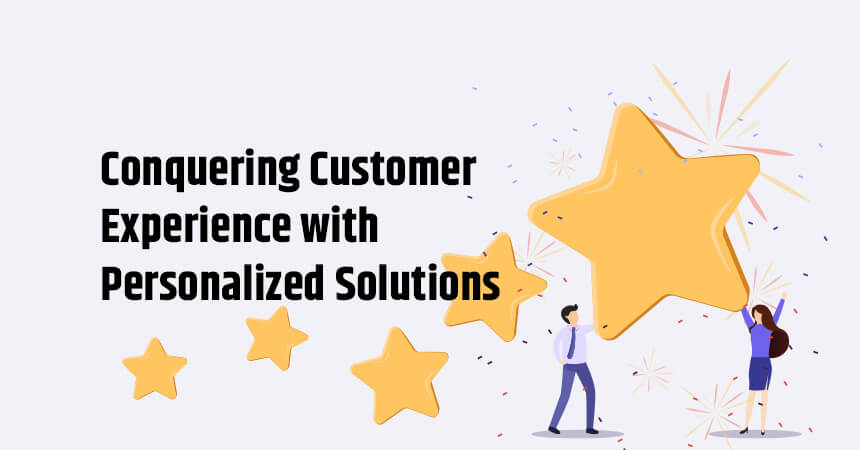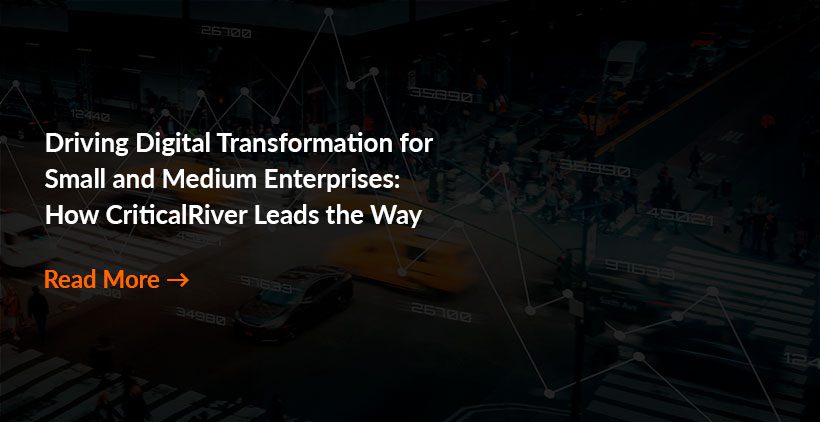Introduction
In the world of business to business, financial success for a company rests in the depth of the relationships it builds with its customers. In any walk of life, connections are won or lost in critical moments. Relationship-defining situations transpire occasionally and fleetingly. Successful businesses capitalize on the moments that matter while executing rightly on those that do not.
When analyzing customer experience, it is natural to fall into the pitfall of thinking that everything must be accurate and that all dimensions of an experience are relatively substantial.
In today’s uncertain landscape, customer experience is more critical than ever before. Customers require a personalized experience when dealing with a business. They are more prone to buy when companies provide a customized experience. Personalization enhances the customer’s experience, helps drive sales, and improves customer loyalty.
Customized experiences are the new digital imperative. It is right in our experiences as customers, and those expectations are also affecting the demands of B2B & B2C customers.
Buyers expect you to recognize them and their demands and render experiences relative to their roles. But delivering on this demand is a different beast altogether.

How B2B Personalization Is Distinctive
As customers, we know what we anticipate from a personalized experience. We might see this put into action by our preferred retailers through online advertisements and email marketing promotions designed around our earlier behaviour or buying choices. But the same tactics and strategies do not appeal to B2B marketing. There are many B2C and B2B buyer journey variations that make personalization more challenging to achieve.

Complex Purchase Decision
Unlike the B2C marketing funnel, you are not just speaking to and rendering an experience to a particular individual purchasing something for themselves. In the B2B marketing funnel, the customer journey is fragmented. There are many decision-makers in various roles associated with the acquisition of an item. Single-decision-maker personalization is tough enough to achieve on its own. Add in some decision-makers, all with varying roles, preferences, and decisions, and that is a lot of different touchpoints to get right.

Experience Over Promotions
Flash sales are standard in B2C, but in B2B, it is the experience and the data you provide, not promotions, that keep clients coming back. Charges are often set based on contractual agreements. There is no negotiating on price, so you must find more compelling means to impact buying behaviour. Try to provide the best content around products and maximize self-sufficiency so clients can do enough research to force them to do business. It might require connections to your back-end systems to give the data that a decision-maker may need along the buying journey.

Being in their Shoes
While messaging that converses to each of these roles is essential, it might not be sufficient. Personalization in a B2B campaign may also mean achieving new applications and functionality tailored for a role. A customer may want a spreadsheet-type view, but a business owner is more prone to react to a B2C-like product and checkout experience. The journey and means to buy must focus on the role and where they are in the decision process.

The Call to Action
Unlike B2C, the buying journey may not end online. Because of the complexities and multiple roles associated, the ultimate call to action may very well be a call to the merchant or company. If you render the personalized content and data required to force them to make that call, you fulfil your personalization approach.
Understanding the Buyer’s Journey
- In B2B, tactics are often created without speaking to the client. Many businesses depend on their sales teams or marketers’ skills to tell them what’s working, what is selling, and what the customer requires.
- It is imperative to know who the customer is and what kind of experience they require. User research will help you see the impact of your audience’s changes and concentrate on understanding behaviours, requirements, and motives. From a firm knowledge of your users, you can start to prepare your strategic direction.
- A customer journey graph shows the story of the customer’s experience from the first contact through engagement and into a long-term relationship. It helps recognize holes and points in the customer experience that are disorganized or worrying.
- Because of the B2B customer journey’s complexity, you will not be ready to serve each of your customer’s unique demands. The journey will look distinct for different businesses. It is not practical or cost-effective for you to satisfy every need of everyone. Take your top clients and concentrate on enhancing their customer journey.
- An efficient personalization strategy is driven by the client requirements and journeys you have classified. It will set your personalization vision, but the profits will not be achieved until the method is executed.
- The best personalization procedure will fall short unless you spend on the proper foundation and processes. To deliver on these actions, you must have an efficient blend of technology, operational processes, and analysis in place.
Personalized Experience is all about being Proactive
Once you have built a digital experience related to your audience’s different sections, you need to look to the future. It’s no-good waiting for a problem to surface; you need to seize your customers’ growing requirements.
Analyzing your digital experience can help with the constant growth that tackles customer problems before they emerge.
Getting ahead with your digital experience is about giving the most seamless, personalized experience to your clients. To do this, you require to know their buying attitudes and demands—this will lead you to the kind of customer experience you need to create.
Personalization used to be an excellent alternative for marketing, but today it is necessary to build a positive customer experience. By micro-segmenting consumers, providing them with tailored content, using omnichannel data, and using AI, companies can create a positive, personalized journey for their buyers.




